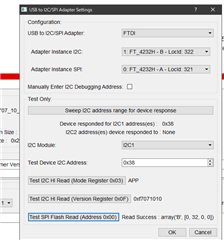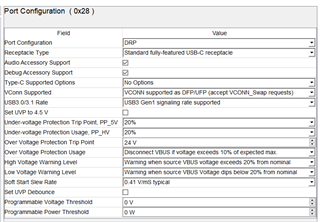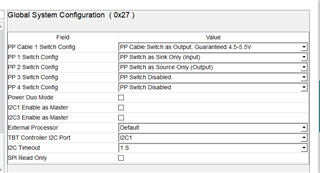Other Parts Discussed in Thread: TPS65987,
Dear Support team,
The product we are developing a Linux OS host machine. However, only under certain conditions, we want to connect it to a PC (Windows) and receive data via USB3 port.
As a Power Delivary, we want to fix the power supply to the source as it does not consist a sink, and the data consist to the DRP with priority on DFP. Is my desired configuration possible?
I created the attached project but it did not work as expected.
VBUS conflicts with VBUS on the PC, is this a problem?
I consider that when our product is UFP, the USB 2.0 D+ and D- will conflict as both the PC and our product are hosts, is this a problem?
Attached is a log file of the connection to the PC.
0310.DRPtest_log_to_WinPC.csv0310.230908_test_for_DRP_from_NewProject.pjt




